?
Akira Shimizu's Iconography
In Shimizu's monument designs and sculptures, there are several symbols which are used repeatedly. In order to understand his basic idea and philosophy, let me explain some of them.
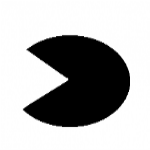
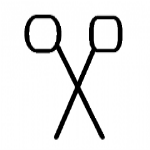
A claw of a crab and a pair of scissors
A claw of a crab is an implement which cuts something and furthermore, a death or a termination of a life like a Broadax of Death(god of death). However, this is strongly related to his traumatic memory of his childhood. He was born in a small town adjacent to Toyama bay and the ocean has always been part of his life. Shimizu once said gone day when I was a boy, I found a crab on the beach. I slowly approached it, and tried catching it. When I touched it, it crumbled into pieces and I found it was just the skin. Since then, he has been scared of crabs, and the reason he used claws many times was to overcome his fear.
Because his father ran a barber shop when he was a boy, Shimizu frequently used barber scissors in his works. Same as a claw of a crab, barber's scissors mean a death or a termination of a life.
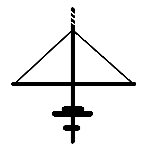
Centered cylinder or column
symbolizes a firing device in ancient times and also is an icon for a man or the genitals.
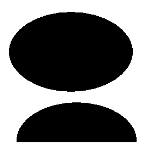
Oval or half-oval
symbolizes water or a woman, and furthermore, the woman's genitals. The combination of a cylindrical body and an oval means birth and life. It is also associated with the Ascension, a doctrine which is part of Shimizufs philosophy.
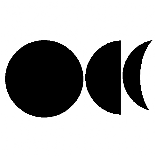
The Moon
The moon and the sun are often arranged in his monument models. When the full moon, half moon and the crescent are used together, they symbolize the passing of time.
He also used the moon in the titles of his sculptures, such as The Full Moon Shooting Device, and he might have a special sense of intimacy for it. In ancient Japan, the moon was a mysterious object. For example, in Taketori Monogatari, the Tale of the Bamboo Cutter, which is a 10th century Japanese folktale, the heroine, beautiful Princess Kaguya, came from the moon. She was proposed to by the emperor who was enamored with her mysterious beauty, but she had to return to the place where she originated - the moon.
It was so much a part of Shimizufs life. Having grown up in a house beside the ocean with the waxing and waning of the moon, made it a primitive object for him.
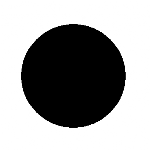
The Sun
is symbolized by a black circle, and the icons of the sun and the moon often form a pair, making a contrast between the positive and the negative, the yin and the yang, and men and women.
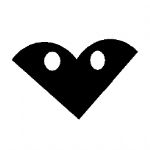
Heart
The intersection of the hemicycle represents a heart of a human or a gill or a respiratory organ. This is an embodiment of an organ that breathes eternally and symbolizes eternity.
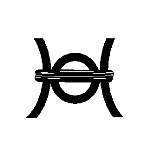
Reel(Wheel)
This shape symbolizes a reel or a wheel, which are rotating devices. Shimizu used this icon to represent spiritual eternity.
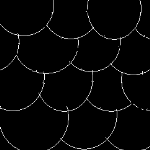
Scale(fish)
The pattern of scales is meant to be a fish, and moreover, the eternity of the spirit. In Shimizufs works, fish often embodies eternity or immortality.
In his iconography, there are many juxtapositions and contrasts, and we can perceive the Yin and the Yang philosophy in his mind. Yin and yang, which originated in China, is a documented concept used within Taoism. It is used to describe how seemingly opposing forces are bound together, intertwined, and interdependent in the natural world, in turn giving rise to each other.
Once, Shimizu said "the antipodes, such as light and darkness, life and death, substance and spirit, and physics and metaphysics are spun into a yarn, and it turns into a tightrope. At first, the rope goes in one direction, but after being tightened, it can withstand any pressure, becoming bidirectional, and can be walked upon. This is the artist's mission." On one hand, the equilibrium of the rope-walking is sensitive and naive, but on the other hand, it is also brave and dynamic.
(MK)
Partially uses material from the Wikipedia article "Yin and yang". This is licensed under the GNU Free Documentation License.
Go to Designs for City Monuments

© 2008 Akira Shimizu. All rights reserved









